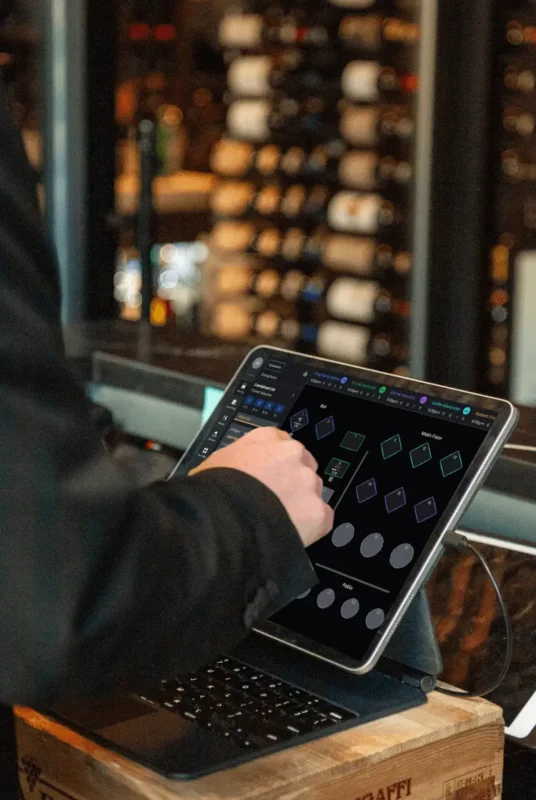The restaurant industry is no stranger to change, but advances in technology and shifts in consumer behavior are rewriting its playbook. Reservation trends for 2025 are set to redefine the way diners interact with restaurants, creating new opportunities for businesses to adapt, innovate, and thrive.
Whether you’re a foodie eager for unique dining experiences, a restaurant owner looking to stay competitive, or a tech enthusiast intrigued by industry shifts, this guide will walk you through the five most significant restaurant reservation trends to watch in 2025.
1. Experiential Dining Takes Center Stage
Gone are the days when a dinner reservation was simply about securing a table. Diners are increasingly seeking more immersive, curated experiences that go beyond the meal itself.
According to data from Tock, 67% of diners now crave more than a standard reservation, favoring options like chef’s tables, multi-course pairings, and tableside preparations. Restaurants offering these elevated experiences often boast 30% higher average checks and up to 80% more repeat guests.
What this means for restaurants in 2025 is clear—offering unique and personalized dining experiences is no longer optional. From interactive chef presentations to exclusive wine-pairing dinners, these enhanced experiences provide diners with not only high-quality food but memories to cherish.
How to Adapt:
- Introduce themed nights, seasonal tasting menus, or “behind-the-scenes” kitchen tours.
- Collaborate with local artists or musicians to elevate the dinner ambiance.
- Experiment with premium service features like tableside cocktail making or interactive cooking elements.
2. The Rise of Early Reservations
Dubbed the “new happy hour,” early reservations (4–6 PM) are reshaping the typical dinner rush. Tock surveys reveal a significant shift, with 49% of diners preferring earlier time slots over the traditional prime-time hours of 7–9 PM.
Part of this trend is driven by the evolving lifestyles of diners who value quieter dining experiences and flexibility. Restaurants are capitalizing on this trend by offering special menus or discounts earlier in the evening to encourage more reservations during these time frames.
How to Adapt:
- Offer a “Twilight Menu” with bespoke pricing or lighter fare available exclusively during early dining times.
- Advertise attractive happy hour deals or early-bird perks to entice diners.
- Adjust service models to provide a first-class customer experience earlier in the day.
3. Group Dining and Shared Experiences
Restaurants are increasingly becoming hubs for gatherings and celebratory meals. Data from Tock highlights that group dining for parties of eight or more accounted for over 50% of bookings during peak holiday times, and this trend is expected to hold throughout 2025.
This push toward communal meals includes everything from business team celebrations to extended family dinners. To meet demand, restaurants are redesigning their spaces to accommodate both intimate and larger groups, creating a flexible atmosphere that serves all needs.
How to Adapt:
- Invest in modular seating arrangements to better handle large and small groups.
- Offer sharable platters and family-style dining options.
- Highlight group booking perks like complementary appetizers or private dining areas.
4. The Technology-Powered Reservation Experience
Digital transformation continues to dominate the restaurant industry, and in 2025, tech-enhanced reservation systems will become table stakes. With up to 45% of reservations made the same day, diners expect flexibility, convenience, and speed in securing their table.
Platforms like Spoton, Tock, OpenTable, aare redefining how restaurants manage bookings. Features such as dynamic pricing, waitlist management, and integrated CRM tools allow restaurants to optimize table turnover while maintaining exceptional guest service.
How to Adapt:
- Upgrade to a smart reservation system that integrates with customer databases and provides real-time availability.
- Use AI-powered tools to send personalized messages confirming bookings or recommending upcoming dining experiences.
- Offer pre-order menus for seamless experiences.
5. Sustainability and Community-Driven Choices
Today’s diners care about more than just taste—they want to know how their meal impacts the planet and their local community. Restaurants with a commitment to sustainability and community engagement are seeing stronger customer loyalty.
Whether it’s sourcing local, eco-friendly ingredients, donating proceeds to community initiatives, or adopting eco-conscious practices, restaurants that prioritize these values will resonate strongly with diners in 2025.
How to Adapt:
- Invest in reducing food waste by leveraging data from reservation systems to anticipate guest volumes more accurately.
- Promote local partnerships and showcase your eco-conscious practices on menus and social channels.
- Offer events such as farm-to-table dinners or charity nights with a portion of proceeds going to local causes.
Staying Ahead of the Curve
The trends driving reservations in 2025 provide a blueprint for restaurants to create authentic, memorable, and personalized experiences while also remaining agile and competitive. Restaurants that adapt to these changes and proactively implement enhanced dining strategies will not only fill tables but also build lasting relationships with their guests.
If you’re a restaurant owner looking to stay competitive in 2025, consider implementing innovative ideas like dynamic menus, immersive experiences, or thoughtful reservation tools. By taking steps today to align with these trends, you’ll ensure that your restaurant thrives in an evolving industry landscape.



















Sign Up for our Newsletter